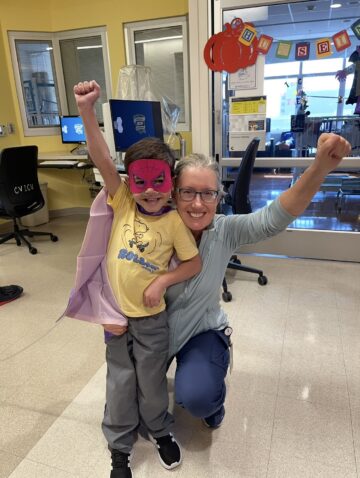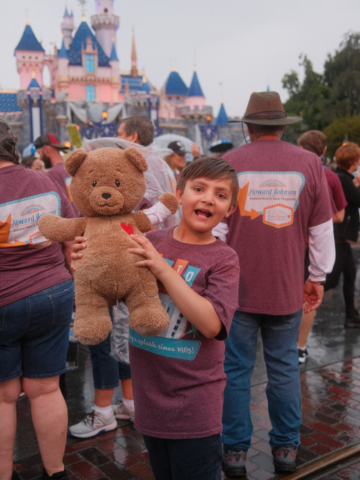Care from CHOC’s Heart Institute makes all the difference
For 14-year-old Aubrey, March 10, 2022, started just like any other day; she got up, went to school and hung out with her friends — just like always.
At school, Aubrey and her classmates were doing a mile-long physical fitness test around the track when about halfway through, Aubrey collapsed. After being unable to find her pulse, two certified athletic trainers performed 10 rounds of CPR on Aubrey, for six minutes. Fortunately, they were able to revive Aubrey before the ambulance arrived.

Aubrey had experienced sudden cardiac arrest, which if not treated immediately with CPR or an automated external defibrillator (AED), can lead to death.
Those two staff members’ swift actions were life-saving that day, to whom Aubrey says, “Thank you.” Her mom, Trisha, adds, “We’re so grateful that they knew what they were doing.”
Sudden cardiac arrest during exercise due to a rare coronary anomaly
Aubrey was taken by ambulance to the nearest emergency department but was soon transferred to CHOC for specialized, pediatric-focused care.
Dr. Wyman Lai, pediatric cardiologist at the Heart Institute at CHOC, performed an echocardiogram (an ultrasound of the heart) and diagnosed Aubrey with a rare heart condition called anomalous aortic origin of a coronary artery (AAOCA) with an intramural left main coronary artery (LMCA). The intramural course was confirmed with a computerized tomogram (CT) scan.
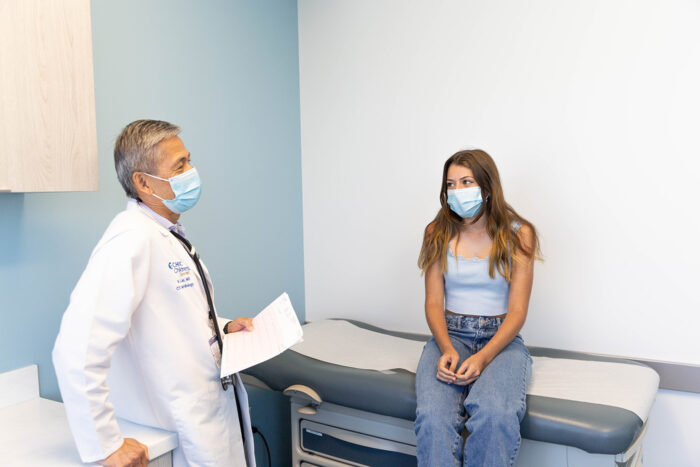
AAOCA is a rare congenital condition (something a baby is born with) in which both coronary arteries (blood vessels that supply blood to the heart) arise from the same aortic sinus. The vast majority of AAOCAs aren’t diagnosed until a person is a teen or adult because the condition doesn’t cause many symptoms.
In a normal heart, the right coronary artery arises from the front of the aorta (the large blood vessel that brings blood to the body) in the right coronary sinus, and the left coronary artery arises from behind the left coronary sinus.
In typical AAOCA, when one of the arteries is connected to the aorta from the wrong side, it gets routed through or around the heart in a way that can inhibit blood flow to the heart or cause a dangerous heart rhythm.
This risk can increase during exercise when the arteries fill with more blood flow. AAOCA involving the left coronary artery is much more dangerous than AAOCA involving the right coronary artery, says Dr. Lai.
Aubrey’s AAOCA had an intramural LMCA even though it arose from the correct (left) coronary sinus, which is an extremely rare variant. This condition is what caused Aubrey’s sudden cardiac arrest while running at school, and would put her at risk of it happening again in the future.
But to ensure it wouldn’t happen again, Dr. Glen Van Arsdell, a cardiac and thoracic surgeon at CHOC, surgically corrected the misplaced coronary artery so it could route blood directly to Aubrey’s heart.
Good memories from her stay at CHOC Hospital in Orange
The surgery had gone perfectly, and Aubrey stayed at CHOC’s cardiovascular intensive care unit (CVICU) for 10 days for her surgery and recovery. Although having to deal with challenging moments during recovery like tiredness and difficulty walking and climbing stairs, Aubrey’s family also made some good memories during her stay at CHOC.
“Our experience at CHOC was amazing – from the nurses to the doctors to the entire staff,” says Darren, Aubrey’s dad.
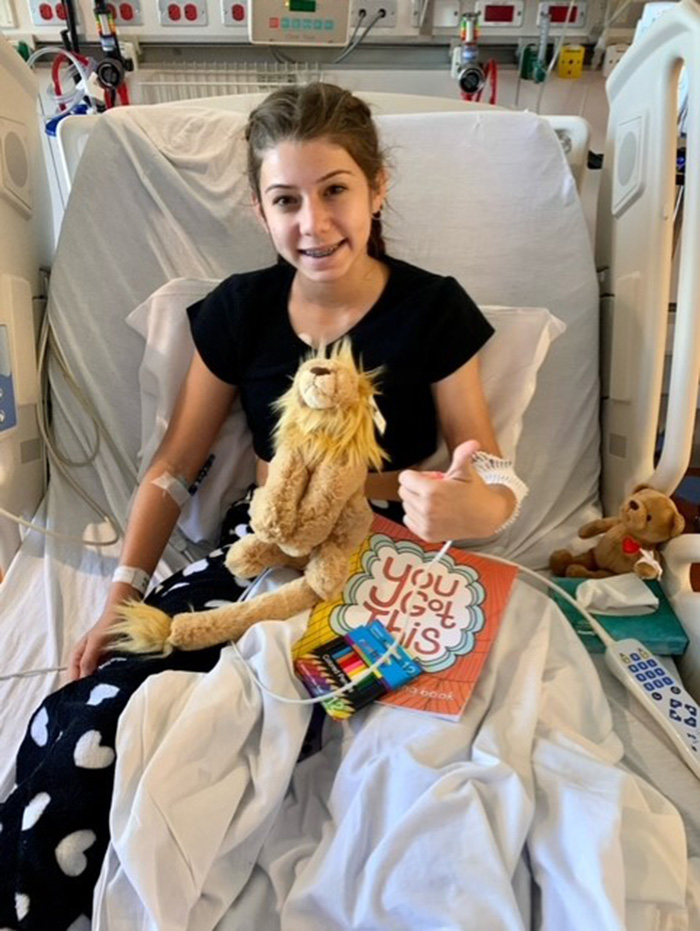
Dr. Jason Knight, medical director of critical care at CHOC, and nurses, Savannah and Marissa, were especially memorable for Aubrey’s family. They went above and beyond to get Aubrey’s surgery scheduled and ensure her swift recovery.
Aubrey also remembers the child life team escorting Aubrey to the operating room while explaining the surgery process to help make it less nerve-wracking for her. Lois, CHOC’s resident therapy dog, also stopped by to wish Aubrey good luck before her surgery.
The rest of Aubrey’s stay was full of activities, games and a lot of movie-watching; she even won a prize from a contest at Seacrest Studios, CHOC’s in-house multimedia broadcast center.
Four days later, Aubrey was discharged to go home.
After three more weeks of recovery at home, Aubrey was able to return to school. Her energy levels had improved, and she was able to walk and climb stairs again with ease. She even caught up on all of her schoolwork — earning A’s and B’s in all of her classes.
Back on the field
Now, almost a year later, Aubrey is a thriving sophomore in high school, who likes to bake, hang out with friends and play soccer.
Aubrey’s parents have made sure to get their entire family echocardiogram screenings for AAOCA, which can have hereditary links. Thankfully, they all came back clear.
On August 5, Aubrey was able to play her first soccer game in just under six months; she’s a left fullback on her high school JV team, as well as a private club team.
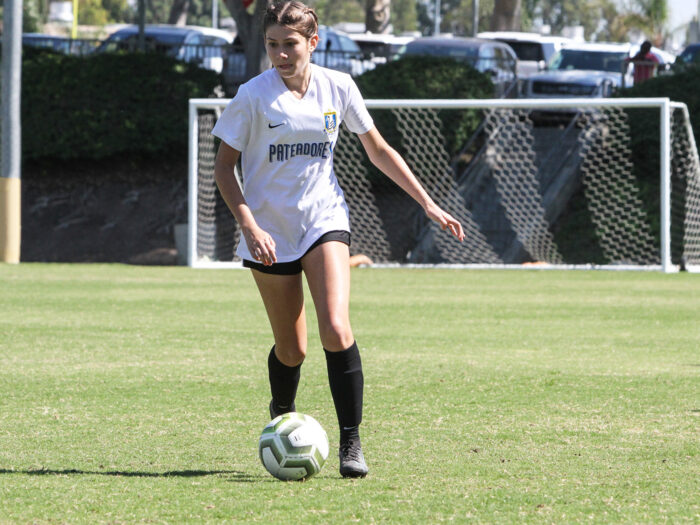
Prior to getting back on the field, Dr. Lai had Aubrey undergo cardiac magnetic resonance imaging (MRI) and an exercise stress test. Based on her positive results, Aubrey was cleared for competitive physical activity. She worked with her coaches to help build her endurance back up slowly. She started running, watching her teammates practice and having private sessions with her coaches. Meanwhile, she and her parents made sure to keep a close eye on how she was feeling.
“It felt great to be back out there,” Aubrey says.
To other teens that might have gone through an experience like hers, Aubrey advises, “It might take a long time to get back [to being fully recovered], but it’s worth taking your time. Be tired when you are tired and take it slow, because you will be better for it in the long run.”
Aubrey will return to CHOC for annual check-ups, but otherwise, she is free to resume all her typical activities and exercise. With the expert care from CHOC combined with strength, determination and patience in recovery, Aubrey was able to make a powerful comeback.
She looks forward to finishing out her high school years with more soccer, baking and hanging out with friends.
Get more expert health advice delivered to your inbox monthly by subscribing to the KidsHealth newsletter here.
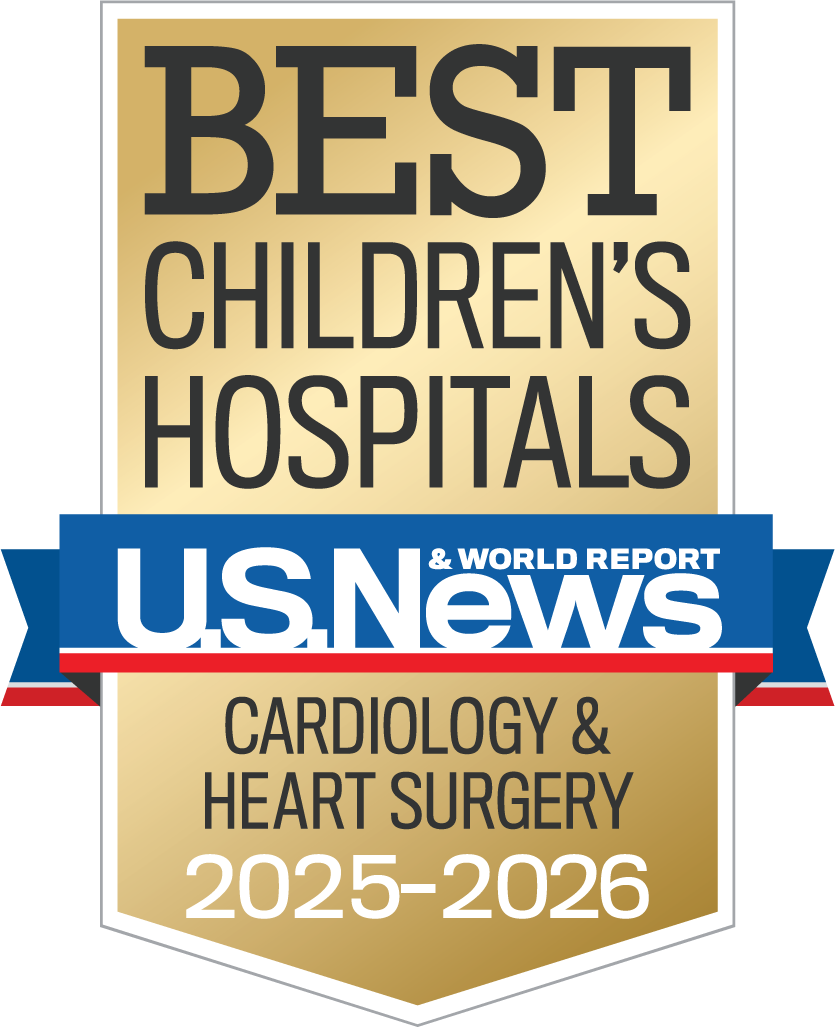
Learn more about CHOC’s Heart Institute
CHOC and UCLA Health together have been ranked among the top children’s hospitals in the nation for Cardiology & Heart Surgery by U.S. News & World Report.

